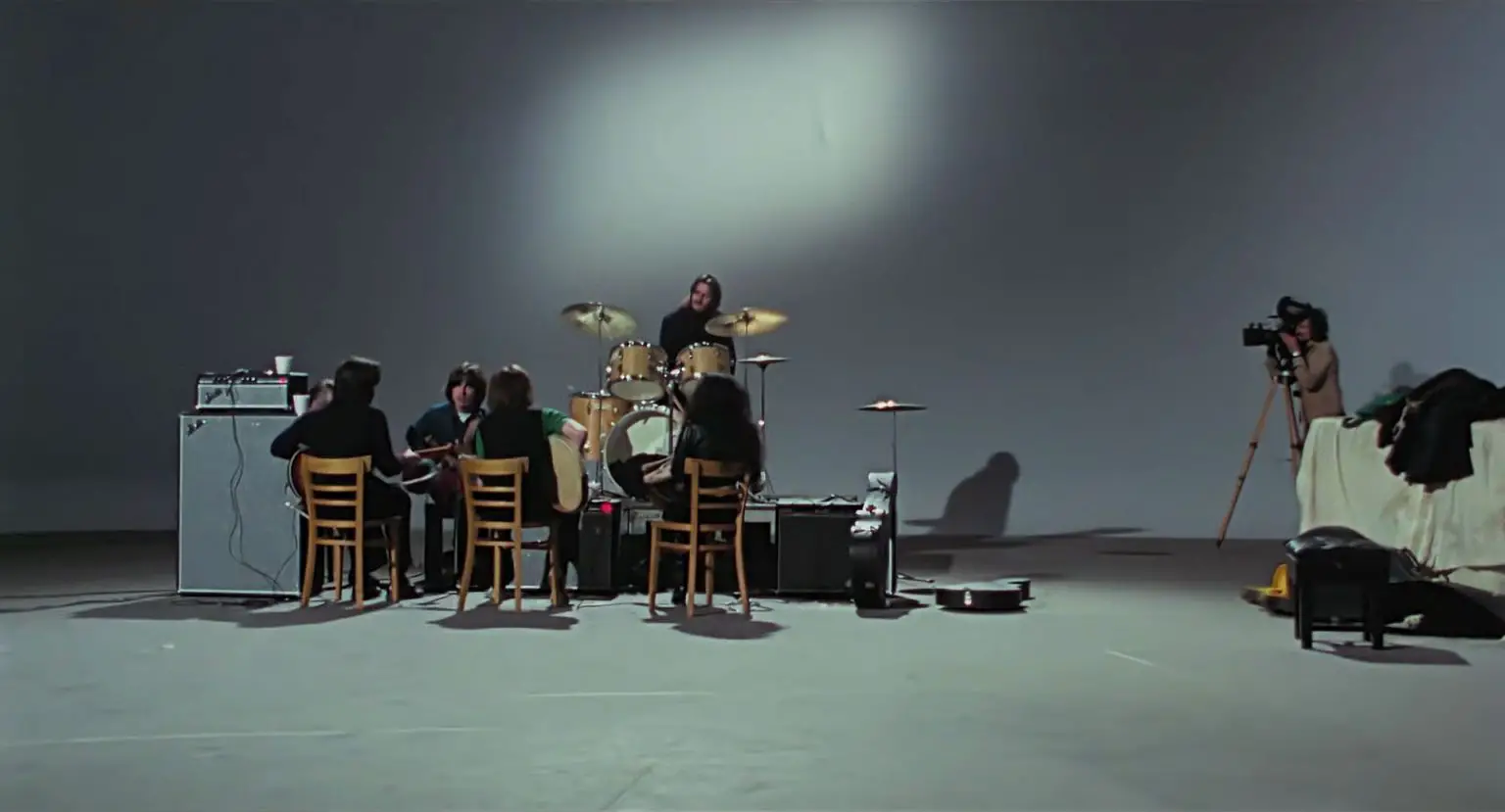An opening montage sets the scene, explaining that in 1956, “16 year old [sic] John Lennon” asked “14 year old [sic] Paul McCartney” to join his band the Quarrymen. While the absence of hyphens is annoying enough, it has been well documented that John met Paul in July of 1957, after Paul had already turned 15. While George Harrison was indeed 13 (albeit absent sufficient hyphens) in 1956, he didn’t join the band until 1958, which only barely qualifies as “soon after”. The captions also suggest that Ringo joined the band before Brian Epstein became their manager, which is, again, not true, and casts worry over the eight hours of footage we’re about to observe.
A clip from Yellow Submarine is likely designed to refer to their film work, but it appears in the context of 1965, before the song had been recorded, and certainly before the film was conceived. Much more effective are the clips chosen to illustrate their decision to stop touring and limit their performance to the studio, and the sudden death of Brian Epstein casting their business in disarray. Scenes from the meditation camp in 1968 and the arrival of Yoko Ono set up the explanation of what their Apple organization was designed to be.
The promotional film for “Hey Jude”, which involved a small invited audience, whet their appetites to consider performing onstage in public again. Plans to rehearse for a TV special are undertaken, with the proceedings to be filmed for perpetuity. The director is one Michael Lindsay-Hogg, who is shown lighting the first of several cigars to be consumed throughout the month. The dress rehearsal is set for January 18, a little over two weeks away. In that time they intend to write, rehearse, and perfect 14 brand-new songs for an album.
What’s immediately curious is that the White Album has been in the shops for just a little over a month. One idea would have been to perform some of those songs before an audience as a promotional tool; surely that would have been an easier goal to attain. Yet somehow their hubris, and certainly a desire to move forward from material they’d lived with for most of the previous year, led to a leap of faith. By now they’d had plenty of success chasing the impossible, and achieving it, with only the mildest backlash or criticism. They were the Beatles. Surely they could do anything to which their minds were set, couldn’t they?
As the first day of rehearsal starts, we see roadie Mal Evans and his assistant Kevin Harrington moving equipment around. Shortly John can be heard playing “Child Of Nature”, which was written during the previous year’s meditation retreat, and would evolve in two years into the superior “Jealous Guy”. George plays along and harmonizes; Yoko is seen but not heard. Ringo arrives, and John plays the germs of what would turn into “Don’t Let Me Down” for them. Ringo moves to his drumkit to play along, and then Paul arrives. John asks, “Who’s that little old man?”, referring to the Hare Krishna devotee in the corner, foretold by the clip from A Hard Day’s Night in the prologue.
Producer George Martin is seen observing, and will be a constant presence throughout the film. While they were basically producing themselves, and had brought engineer Glyn Johns in to man the sound for the live performance, Big George was still their A&R rep at EMI, and very much invested in their music and their success, professionally as well as personally.
As they work their way through “I’ve Got A Feeling”, which was rare at this point for having actual contributions from both John and Paul, it’s clear that the scope of the TV special and performance is still beyond them. They only know what they don’t want, starting with the atmosphere on a drafty sound stage. (We get the first mention of the amphitheater in Libya that Lindsay-Hogg and producer Denis O’Dell would love to use for the live performance, and because Jackson includes an image of said theater, we can understand their zeal for it.)
However, their intuitive ability to craft and arrange music is undeniable. “Don’t Let Me Down” is still being molded, and Paul comes up with good ideas (moving “I’m in love for the first time” to a bridge) and not so good (repeating each line a la “Help!”) for it. He demonstrates “Two Of Us”, and while they try to rock it up, in its acoustic demonstration, it’s pretty much like how it will turn out on the eventual album.
It’s a tentative start for the project, whatever it’s supposed to be, but we can see enthusiasm. It’s also important to realize that at this moment, Paul was not yet 27 years old, George was a few weeks away from 26, and John and Ringo were both 28. They were still the boys. Kids, albeit rich ones.

I didn't realize that Denis O'Dell was a real person: https://www.youtube.com/watch?v=noGjJyEDm5s
ReplyDeleteI mean, everything else about this song is so preposterous!
Hyphens are not used so much in British English. The expression "16 year old" is perfectly normal.
ReplyDelete